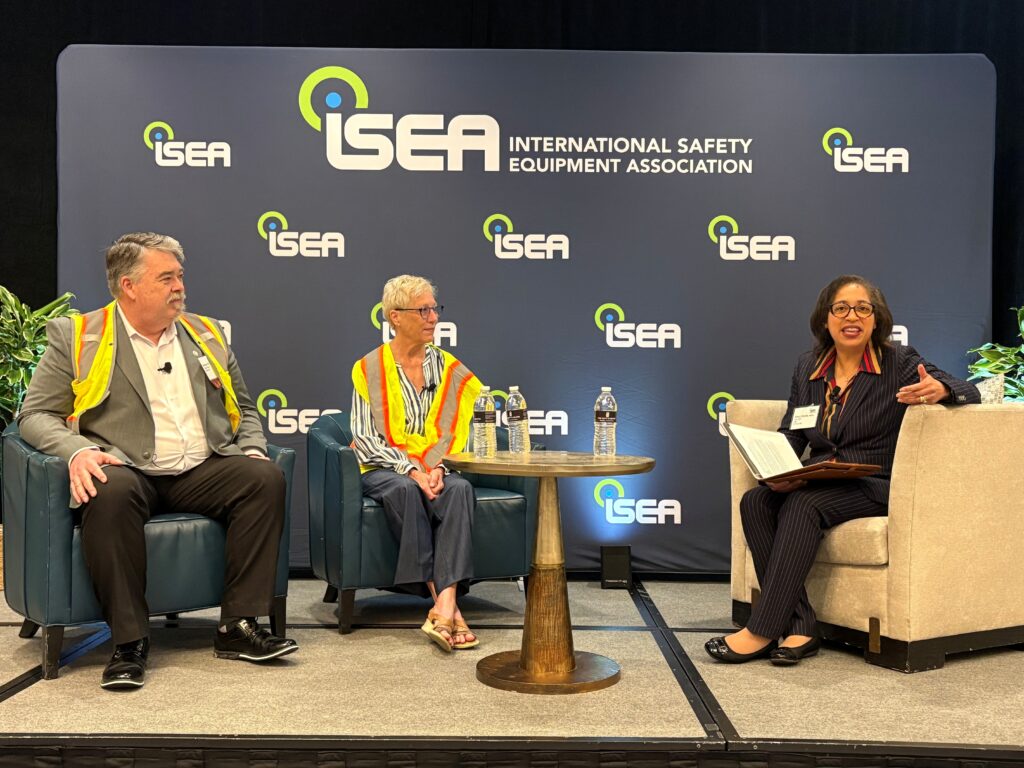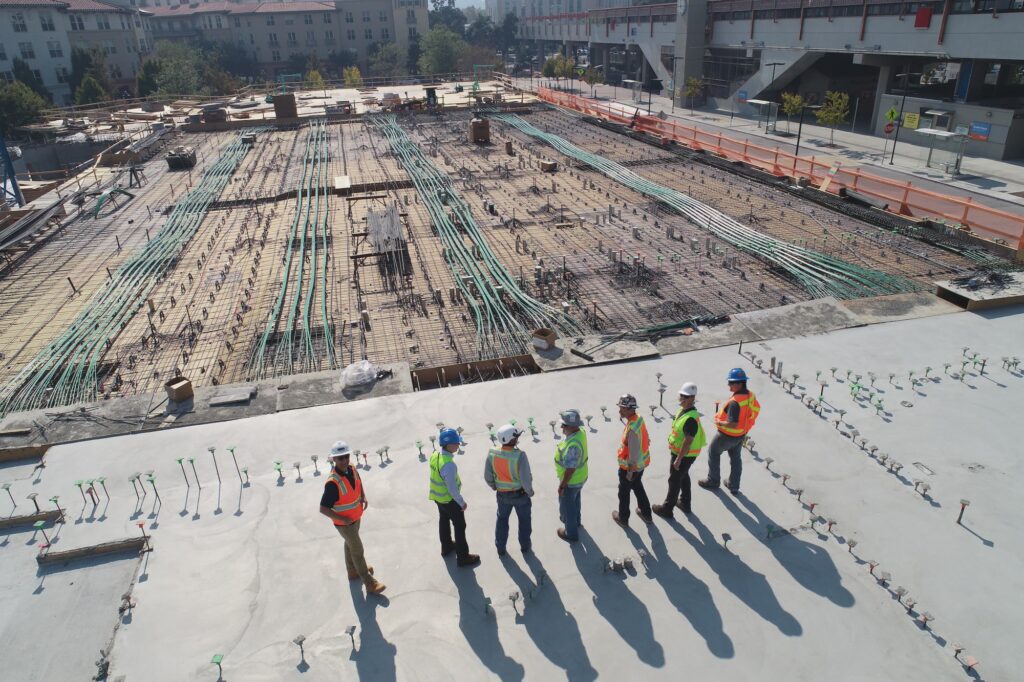In construction, hearing loss is an invisible hazard—permanent, preventable, and all too often ignored. While workers strap on hard hats, steel-toed boots, and high-visibility vests without hesitation, hearing protection still lags behind in both compliance and comfort.
That was the clear takeaway from a candid conversation among field leaders during the End User Panel at ISEA’s 2025 Executive Summit. Each panelist shared real-world experiences from the field, identifying common barriers and new opportunities to improve hearing protection practices in construction.
“They have them—but will they wear them?”
One of the biggest challenges? Compliance.
“Workers… they’re not going to wear their earmuffs. They will wear earplugs—but only when reminded.”
“Most of the time, you find the earplugs tied to the hard hat, dangling down the back. Or even better—up on top of their head.”
Hearing protectors are often not clean or properly maintained in the field.
“They’re not kept clean for the most part… because they hang on that hard hat.”
Comfort, Fit, and Communication: The Compliance Trifecta
Discomfort and communication interference were repeatedly cited as obstacles.
“Standard earplugs don’t fit me. I have really tiny ear canals. Not everyone has the same size ears.”
“People say, ‘I can’t put earplugs in—I have to be able to hear that alarm go off.’”
This tension between protection and situational awareness continues to drive resistance on job sites.
The Earbud Problem
Another challenge? Misunderstanding of what qualifies as hearing protection.
“We have a lot of projects where the workers think earbuds are hearing protection. I tested it out on the flight here—turned on my noise-canceling earbuds with no music. I could still hear every conversation around me, but not the engines. They’re not rated, but workers think they are.”
As consumer audio devices become more advanced, the line between convenience and compliance gets blurry.
“If someone invents a noise-canceling earbud that connects to a walkie talkie AND protects hearing,” one panelist joked, “that product is going to go far.”
Fit Testing: A Smart Solution, But Hard to Scale
NIOSH’s 2025 recommendation to use individual fit testing for hearing protection is a science-backed move forward—but implementation can be difficult, especially across large construction operations.
“Fit testing for earplugs is a great idea. But how do I do that on 52 projects in 37 states with 10–12 people each? I can’t just bring them all back to headquarters.”
Culture Matters: Shifting the Attitude Toward Health Hazards
“In construction, we are the worst with health hazards. The general attitude is, ‘If it’s not hurting me now, I must be good with it.’”
The panelists agreed: changing that mindset is the first step to improving compliance—not just with hearing protection, but across all PPE.
ISEA is Listening
ISEA’s Hearing Protection Product Group is working to close these gaps, promote NIOSH-aligned best practices, and support innovations that balance protection, performance, and practicality.
Because protecting a worker’s hearing isn’t just about checking a box—it’s about ensuring they can safely hear, communicate, and live well both on and off the job.


